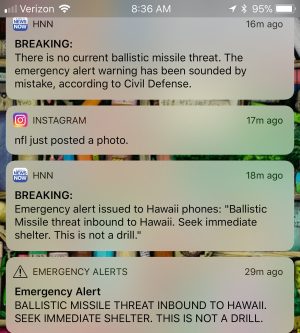Here’s how to make sure Hawaii’s missile warning fiasco isn’t repeated
Ars Technica 2018-01-21
This is a guest post from Steve Bellovin, a professor in the Computer Science department and affiliate faculty at the law school at Columbia University. His research focuses on networks, security, and public policy. His opinions don't necessarily reflect the views of Ars Technica.
By now, most people have heard about the erroneous incoming ICBM alert in Hawaii. There's been scrutiny of the how the emergency alert system works and of how international tensions and the flight times of missiles can lead to accidental nuclear war. I'd like to focus instead on how the systems design in Hawaii led to this problem—a design that I suspect is replicated in many other states.
One possible factor, of course, is hurried design:
